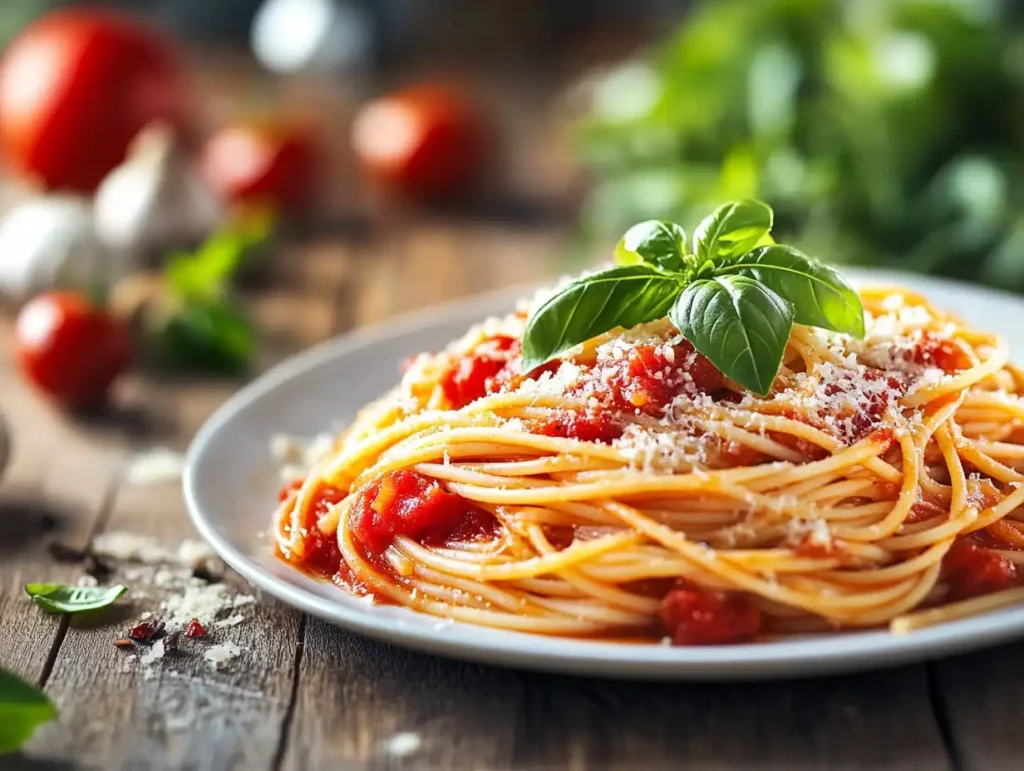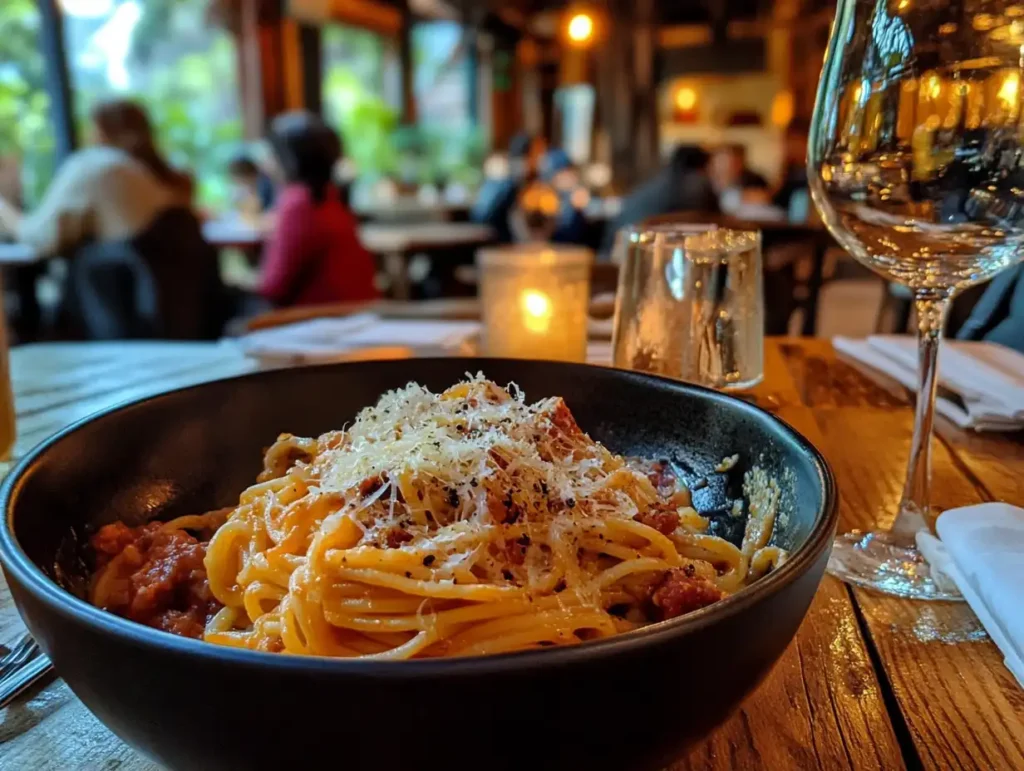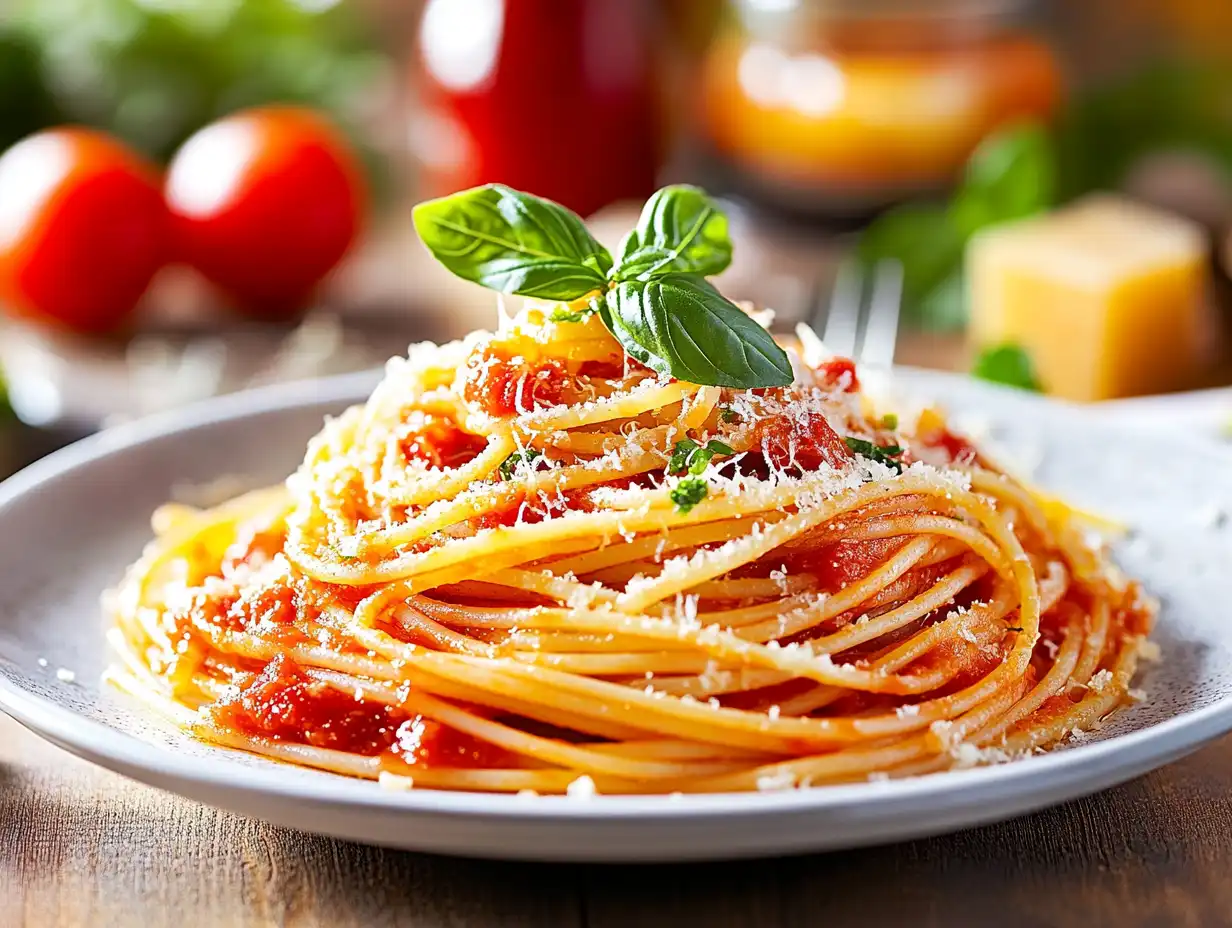Introduction
Ah, pasta! A symbol of Italian cuisine and a beloved dish around the globe. But when it comes to the heart of Italy, what pasta do Italians actually prefer? For centuries, pasta has shaped Italian culture, offering a rich tapestry of shapes, sauces, and traditions. From the silky ribbons of tagliatelle to the iconic spaghetti strands, Italians hold strong preferences influenced by region, occasion, and tradition.
This article delves into the fascinating world of Italian pasta. We’ll explore its historical roots, regional variations, and the pasta shapes Italians cherish the most. Whether you’re a pasta aficionado or just curious about what makes Italian pasta so special, you’re in for a delicious journey.
A Brief History of Pasta in Italy
How Pasta Became a Staple in Italian Cuisine
The origins of pasta in Italy intertwine with both fact and legend. While some attribute its introduction to Marco Polo’s travels in Asia, historical evidence reveals that Italians had been enjoying pasta long before his expeditions. Ancient Etruscans ground grains and mixed them with water, creating early forms of pasta that laid the foundation for this culinary revolution.
By the Middle Ages, Italians had refined pasta into a dried product, perfect for long-term storage. This innovation supported sailors and merchants, who relied on its durability. As durum wheat flourished in Southern Italy, pasta transformed into the modern staple we recognize today.
Key Regional Influences on Pasta Preferences
Italy’s diverse geography and history have shaped its pasta preferences. Northern regions lean toward rich sauces and fresh egg-based pasta, while Southern regions favor dried durum wheat varieties. These regional distinctions reflect Italy’s use of local ingredients and its long-standing culinary ingenuity.
The Role of Regional Diversity
Northern Italian Pasta Preferences
In Northern Italy, people favor pasta with rich, hearty sauces like ragù or creamy butter-based recipes. Tagliatelle, pappardelle, and ravioli dominate the region’s cuisine. Cooks in Emilia-Romagna often prepare Tagliatelle al Ragù, a dish that exemplifies the region’s love for meaty, flavorful pasta.
Southern Italian Pasta Favorites
Southern Italy, by contrast, highlights simplicity and bold flavors. Spaghetti, orecchiette, and penne reign as staples in Southern kitchens. Families often pair these pasta shapes with olive oil, fresh tomatoes, and seafood. Campania’s residents are especially proud of Ziti al Ragù, while Sicily features Busiate with Pesto Trapanese as a local delicacy.
Top Pasta Shapes Italians Love
Spaghetti: A National Favorite
Spaghetti stands as a quintessential symbol of Italian cuisine. Italians enjoy it in classic dishes like Spaghetti al Pomodoro or Spaghetti alla Carbonara. Its versatility allows chefs to pair it with various sauces, both light and robust. Because spaghetti clings to sauces perfectly, it remains a national favorite.
Penne: Versatile and Popular
Penne’s cylindrical shape and diagonal ends make it perfect for chunky sauces like Arrabbiata or creamy Panna e Funghi. Italians appreciate its versatility, which allows them to bake it in Pasta al Forno or stir it into quick, flavorful sauces.
Tagliatelle: Northern Italy’s Star
Tagliatelle captures the heart of Northern Italy. Its wide, ribbon-like strands hold rich sauces like Ragù alla Bolognese, creating a perfect harmony of texture and flavor. Legend credits this pasta’s creation to a chef inspired by Lucrezia Borgia’s golden hair.
Rigatoni: A Roman Favorite
Rigatoni’s ridged surface makes it a top choice for thick, hearty sauces. Romans often enjoy it in Rigatoni all’Amatriciana, a dish that highlights the city’s culinary traditions. Its larger size adds a satisfying chew, making it a comforting option for many Italian families.
The Sauce-Pasta Connection

Why Italians Pair Specific Sauces with Pasta
Italians carefully match pasta shapes with sauces to enhance both flavor and texture. Long, thin pasta like spaghetti complements light olive oil-based sauces, while short, ridged pasta like rigatoni holds onto thick, chunky sauces. This thoughtful pairing allows each ingredient to shine.
The Art of Balance in Italian Pasta Dishes
Cooks in Italy focus on balance when preparing pasta dishes. They never overwhelm the pasta with sauce, instead creating harmony between the two. Final touches like freshly grated Parmigiano-Reggiano, fresh herbs, or olive oil bring out the dish’s full potential.
Iconic Pasta Dishes Loved Across Italy
Spaghetti Carbonara
One of Italy’s most iconic dishes, Spaghetti Carbonara, hails from Rome. This creamy yet cheese-based pasta dish is made with simple ingredients: eggs, Pecorino Romano, guanciale (cured pork cheek), and freshly cracked black pepper. Despite its minimalistic recipe, the magic lies in its execution. Italians believe that Carbonara must never contain cream—only the perfect emulsion of eggs and cheese.
The rich, savory flavor of guanciale and the velvety sauce make Carbonara a top choice for pasta lovers, embodying the heart of Italian cooking: simplicity and quality ingredients.
Lasagna: A Hearty Favorite
Lasagna, the ultimate comfort food, is a layered masterpiece of pasta sheets, ragù, béchamel, and cheese. This dish originates from Emilia-Romagna, but variations exist throughout Italy. In the North, lasagna often features a rich meat sauce, while the South may incorporate ricotta and fresh tomato sauce.
Each forkful of lasagna offers a symphony of textures and flavors, making it a dish Italians often associate with family gatherings and special occasions.
Pasta al Pomodoro: Simple Yet Perfect
Sometimes, simplicity reigns supreme, and Pasta al Pomodoro (pasta with tomato sauce) is a testament to that. Made with just a few ingredients—ripe tomatoes, olive oil, garlic, and basil—this dish highlights the importance of fresh, high-quality produce.
Pasta al Pomodoro is a go-to meal for Italians of all ages. It’s comforting, quick to prepare, and embodies the phrase “less is more.” For many, it’s a nostalgic reminder of home-cooked meals shared with family.
Seasonal and Festive Pasta Traditions
Pasta During Festivals
Italy’s love for pasta shines during holidays and festivals. Each region has its traditional pasta dish for special occasions. For example:
- Tortellini in Brodo (stuffed pasta in broth) is a Christmas staple in Emilia-Romagna.
- Pasta al Forno (baked pasta) graces Easter tables across Southern Italy.
- Strangozzi al Tartufo (pasta with truffles) is popular in Umbria during truffle season.
These dishes reflect the importance of celebrating with food that brings comfort and joy.
Seasonal Ingredients in Pasta Recipes
Seasonality is at the heart of Italian cuisine. Spring sees dishes like Fettuccine with Asparagus and Peas, while summer highlights fresh tomatoes and basil. Autumn brings indulgent combinations like Pumpkin Ravioli, and winter features hearty dishes such as Pappardelle with Wild Boar Ragù.
By embracing the flavors of each season, Italians ensure that their pasta dishes are always fresh and reflective of nature’s bounty.
How Italians Truly Enjoy Their Pasta

The Italian Pasta Culture and Rituals
In Italy, pasta is more than just a meal—it’s a ritual steeped in tradition and culture. Italians approach pasta with a sense of reverence, treating it as a dish that deserves time and attention. Meals are often leisurely, allowing for conversation and connection, with pasta being the centerpiece.
Italians also value simplicity. The dish is never drowned in sauce or overloaded with ingredients. Instead, they focus on quality over quantity. The pasta must be cooked al dente, meaning “to the tooth,” where it retains a slight firmness when bitten—a texture considered perfect for enjoying the dish to its fullest.
Why Al Dente is Non-Negotiable
For Italians, al dente isn’t just a preference; it’s a standard. Overcooked pasta is seen as a culinary faux pas, as it loses its structure and fails to complement the sauce. Al dente pasta not only provides a better mouthfeel but also allows for proper digestion, as its lower glycemic index helps maintain energy levels longer.
To achieve this, Italians rely on precise cooking times and regular tasting. The phrase “trust your teeth” is often used to describe the process of ensuring that the pasta has just the right bite.
The International Influence of Italian Pasta
How Italians View Pasta Beyond Italy
Pasta has become a global phenomenon, but Italians have mixed feelings about how it’s interpreted abroad. Many are proud of its worldwide popularity but are quick to point out instances where traditional practices are ignored. For example, adding cream to Carbonara or ketchup to pasta dishes are considered culinary missteps in Italian culture.
Despite these differences, Italians appreciate that their beloved dish has brought joy to people worldwide. They see it as an opportunity to share their culinary traditions, often encouraging others to adopt authentic methods of preparation.
The Globalization of Pasta Shapes
With the spread of Italian immigrants in the late 19th and early 20th centuries, pasta became a global staple. Shapes like spaghetti, macaroni, and fusilli gained international fame, while dishes like spaghetti bolognese (an adapted version of ragù) became household names.
Interestingly, globalization has also brought foreign influences back to Italy, with chefs experimenting with non-traditional ingredients and preparations. However, the core principles—fresh ingredients, balance, and simplicity—remain unchanged.
FAQs About Italian Pasta Preferences
What Are the Most Popular Pasta Sauces in Italy?
Italians favor sauces that complement the pasta without overpowering it. Some of the most popular include:
- Ragù alla Bolognese: A slow-cooked meat sauce, often paired with tagliatelle.
- Pomodoro Sauce: A fresh tomato-based sauce, simple and flavorful.
- Pesto Genovese: Made with fresh basil, pine nuts, garlic, Parmesan, and olive oil, typically paired with trofie or linguine.
- Carbonara Sauce: A Roman classic with guanciale, Pecorino Romano, eggs, and black pepper.
- Amatriciana Sauce: A bold, tomato-based sauce with guanciale and Pecorino, often served with bucatini.
Each region boasts its specialties, ensuring a diverse array of options.
How Do Italians Choose Pasta Shapes?
Italians select pasta shapes based on the sauce they plan to use. Long, thin pastas like spaghetti or linguine pair well with lighter sauces, while shorter, ridged shapes like rigatoni or penne hold chunkier, heavier sauces. This careful pairing ensures the flavors and textures are balanced in every bite.
Is Fresh Pasta Preferred Over Dried Pasta?
Both fresh and dried pasta have their place in Italian cuisine. Fresh pasta, often made with eggs, is favored for delicate dishes and creamy sauces, such as fettuccine Alfredo or stuffed pastas like ravioli. Dried pasta, made from durum wheat, is more versatile and better suited for robust, long-cooking sauces like ragù. Ultimately, the choice depends on the dish and region.
Which Regional Pasta Dishes Are Famous?
Some iconic regional pasta dishes include:
- Cacio e Pepe (Lazio): A simple, peppery cheese sauce with spaghetti or tonnarelli.
- Orecchiette con Cime di Rapa (Puglia): Pasta with broccoli rabe, garlic, and chili flakes.
- Trofie al Pesto (Liguria): A regional favorite made with basil pesto.
- Bigoli in Salsa (Veneto): Thick, spaghetti-like pasta with anchovy and onion sauce.
Each dish showcases local ingredients and culinary traditions.
How Do Italians Eat Pasta in Daily Life?
Pasta is a staple in the daily lives of Italians. It’s often enjoyed as a primo piatto (first course) during lunch or dinner, with simple recipes like aglio e olio (garlic and oil) or pasta al pomodoro being common weekday meals. Leftovers may even be reinvented as pasta frittata for the next day. Italians prioritize moderation, typically serving smaller portions to savor the experience without overindulgence.
Explore Related Pasta Topics
For more insights into the world of pasta, you might find these articles helpful:
- Discover the unique charm of Ditalini Pasta: A Culinary Delight and Versatile Ingredient to explore another classic Italian pasta variety.
- Dive into the distinctions and preparation tips in Is Capellini the Same as Angel Hair Pasta? Exploring Similarities and Differences.
- Find out the Best Pasta for Weight Loss and make informed choices for a balanced diet.
These links offer a deeper appreciation for the diversity and cultural richness of Italian pasta traditions!
Conclusion
Italian pasta is more than just food; it’s a celebration of tradition, creativity, and love for life’s simple pleasures. From the creamy richness of Carbonara to the humble elegance of Pasta al Pomodoro, every dish tells a story of regional pride and culinary artistry. Italians’ deep respect for pairing sauces with the right shapes and their insistence on cooking pasta al dente highlight the attention to detail that makes their cuisine world-famous.
Whether you’re enjoying spaghetti, rigatoni, or ravioli, Italian pasta offers something for everyone. So, the next time you twirl a forkful of spaghetti or scoop up a cheesy bite of lasagna, know that you’re savoring centuries of history and passion.
